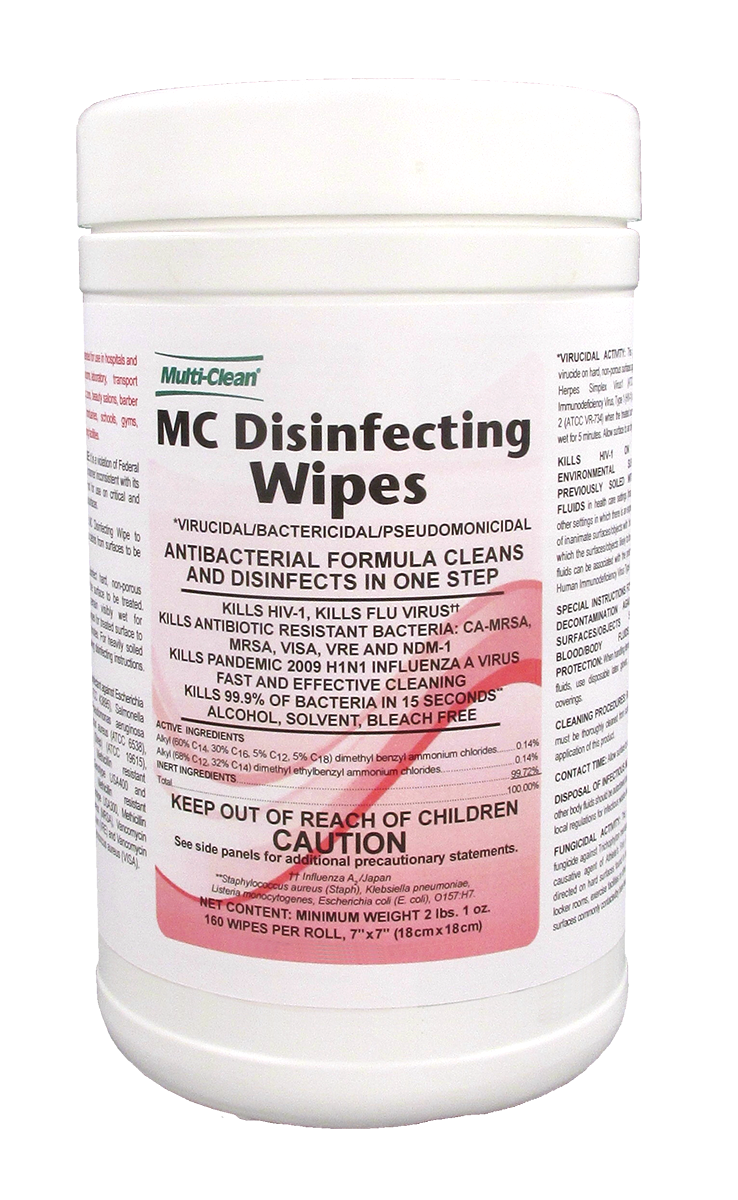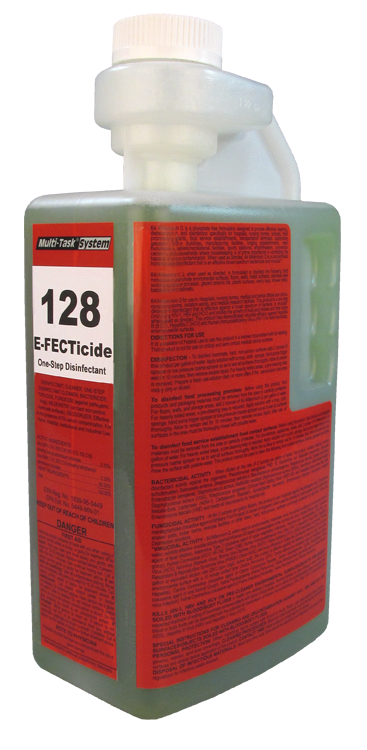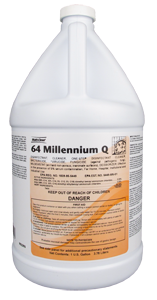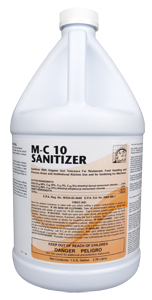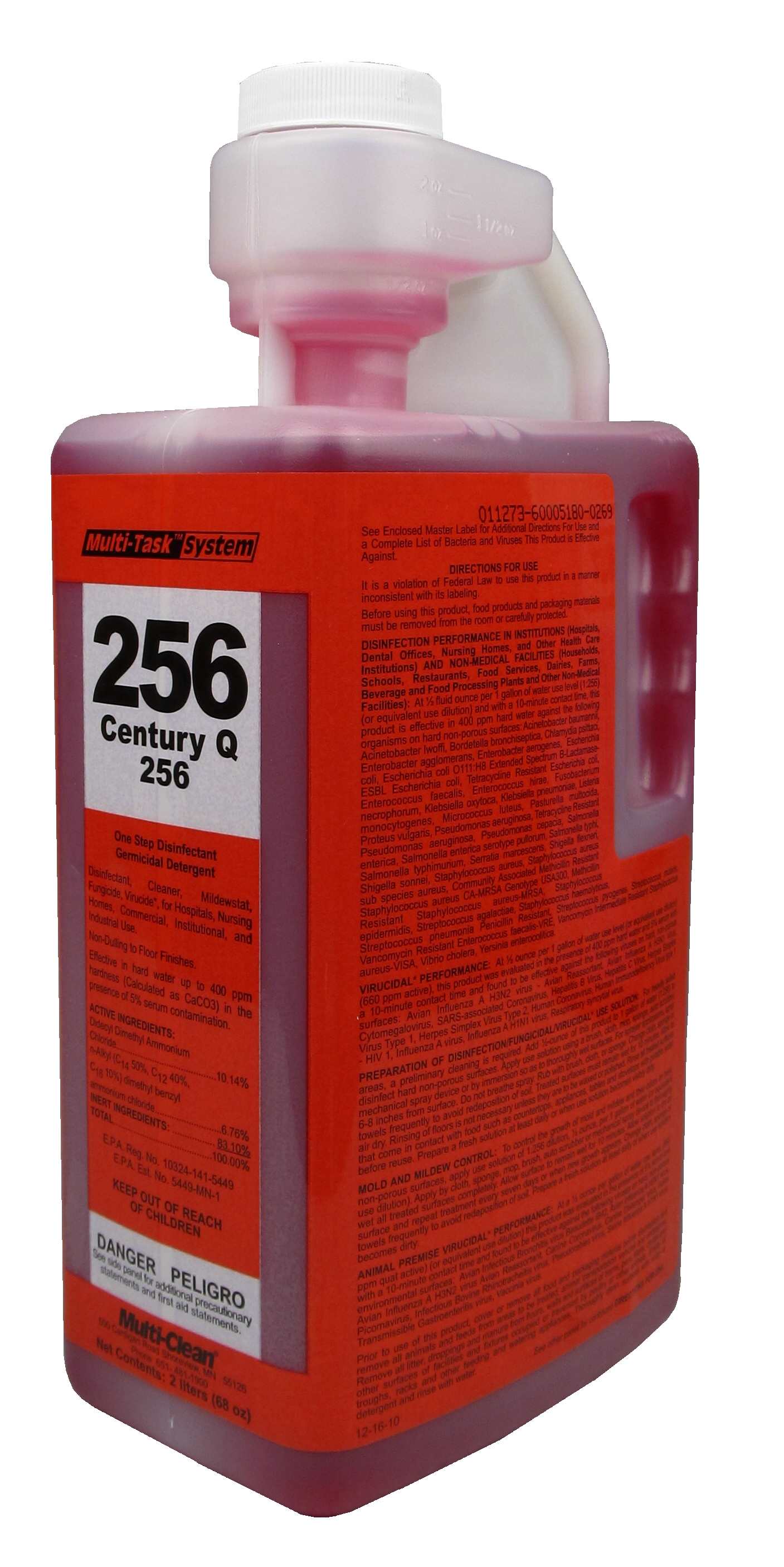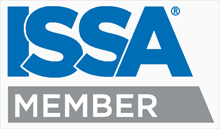Disinfectants
Disinfectants to help keep facilities clean and people healthy.
Multi-Clean makes a variety of hospital-grade disinfectants and sanitizers for use in healthcare facilities, schools, offices, day-cares, restaurants and more.The spread of contagious illness and disease remains a top concern for public and private institutions. Billions of dollars are lost each year by businesses when sick employees are unable to work. Student academic performance suffers when schools lose millions of days each year due to the combined effects of the cold and flu. Healthcare is even more impacted with the challenge of keeping already sick patients from contracting healthcare acquired infections (HAI). A big part of infection control is sanitation practices that include regular cleaning and disinfecting, in particular, high-touch surfaces contacted by many individuals over a short period. Below are CDC fact sheets to guide and educate the public and the medical community on threats to stop the spread of infections.
MC Disinfecting Wipes
Pre-moistened towels
MC Disinfectant Wipes has demonstrated effectiveness against viruses similar to Monkeypox virus on hard non-porous surfaces. Therefore, this product can be used against Monkeypox virus when used in accordance with the directions for use against Human Rotavirus (ATCC VR-2018) on hard non-porous surfaces. Refer to the CDC website at https://www.cdc.gov/poxvirus/monkeypox/index.html for additional information.
Learn More About MC Wipes Here



Microcide TB
Disinfectant-Cleaner
Fast Kill Disinfectant! A ready-to-use, one-step hospital germicidal disinfectant cleaner and deodorizer. Superior cleaning, great for cleaning all restroom surfaces. Highly effective against bacteria, antibiotic resistant bacteria, viruses and fungi. Effective against MRSA, HIV, HBV, HCV and Canine Parvovirus. EPA Registered 1839-83.
Learn More About Microcide TB Here
128 E-Fecticide
Fast Kill Disinfectant
Hospital grade disinfectant cleaner. Neutral PH makes this product safe for floors. Hospital grade, broad spectrum efficacy includes HIV, HBV, MRSA, VRE. Disinfectant, bactericidal, fungicidal, virucidal, mildewstatic. 1:128
Learn More About E-Fecticide Here
64 Millennium Q
Multi-Use One Step Cleaner - Disinfectant
A concentrated multi-surface cleaner, just 2 fl oz. per gallon to clean sticky messes and cut grease. This product deodorizes areas which are generally hard to keep fresh smelling, such as empty garbage bins and cans toilet bowls, behind and under sinks, and other areas where bacterial growth can cause malodors.
64 Millennium Q is a one step1,2 detergent disinfectant that is effective against a broad spectrum of bacteria, is virucidal* and inhibits the growth of mold and mildew and their odors when used as directed.
Kills Canine Parvovirus
1 Non-food contact surfaces only.
2 When used according to disinfection directions.
Learn More About Millennium Q Here, US only
Letter of Guaranty

M-C 10 Sanitizer
Food Service Sanitizer
Highly effective no-rinse food service sanitizer recommended in all phases of food processing and food service environments. Meets USDA Performance Standards for D2 type products. EPA Registered.
Learn More About M-C 10 Here
256 Century Q
Heathcare Disinfectant
A no-rinse, neutral pH, hospital disinfectant cleaner. 256 Century Q is efficacious against Rotavirus, Adenovirus Type 4, and is an EPA-registered hospital disinfectant. According to CDC guidance, this product can be used to disinfect environmental surfaces in rooms of patients with suspected or confirmed virus infections.
Learn More About Century Q HereMulti-Clean 256 Century Q Disinfectant Cleaner (EPA Registration No. 471-129-5449) kills the coronavirus that may cause COVID-19. For more information about the 2019 Novel Coronavirus (SARS-CoV-2, the cause of COVID-19), refer to the CDC website CDC.gov

Learn More About Canadian Version of Century Q Here

